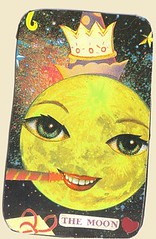Different Tarot Decks Designs
The first description of tarot decks appeared as early as the beginning of the 15th century when Martiano da Tortona mentioned some card games that resembled a lot to tarot. The symbols on these early illustrations were Greek deities while the suits matched four types of birds, a pattern totally different from the basic Italian decks. These forefathers of the tarot deck counted only sixteen cards, but they surely enjoyed great popularity. Later, other decks are described by Italian documents throughout the 15th century. Given the heraldic, social, poetical and philosophical interpretations of the cards, modern researchers are surely impressed by the vividness of the symbolism and the ideology behind it.
The oldest tarot deck preserved to our times were designed according to the specifications of the Visconti family. The sixty-six cards are presently on public display at the Yale University Library in New Haven. Another well-known deck was painted by Bonifacio Bembo according to the instructions of Maria Visconti, they are preserved with the exception of two who were either lost or never existed. These latter tarot decks are known as Visconti-Sforza and their design is very popular nowadays too.
Lots of modern reproductions combine batons, swords, coins and cups with trump cards as the clear image of traditional iconography of the old times.
An analysis of the first-made tarot decks indicates a reduced number given the painstaking effort required for their design. Tarot decks have survived from Marseilles, Egypt or Switzerland and in time they came to be associated with magic and mysticism. Occultism and magic fans were the first to embrace and widely use the
Pages: 1 2
